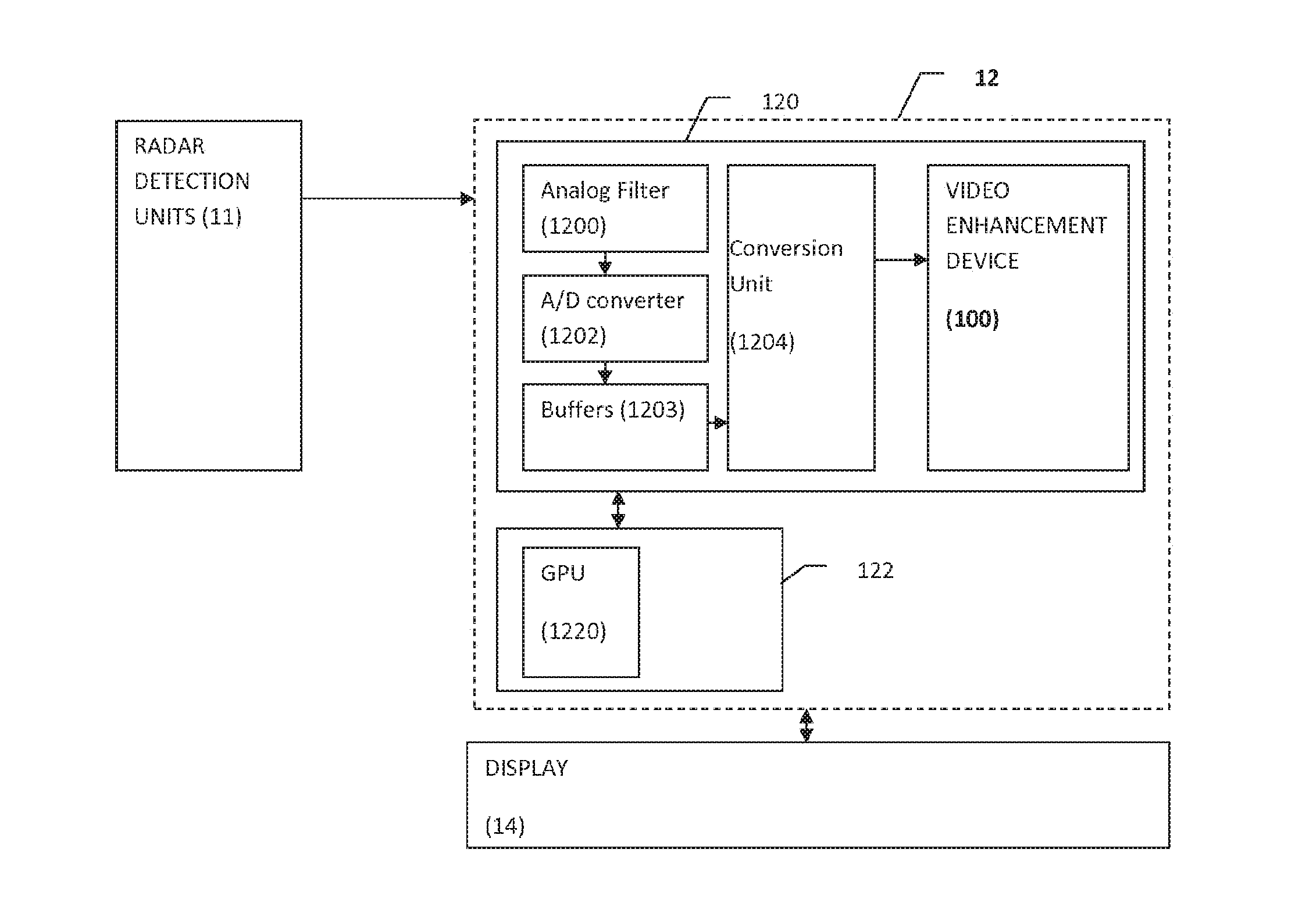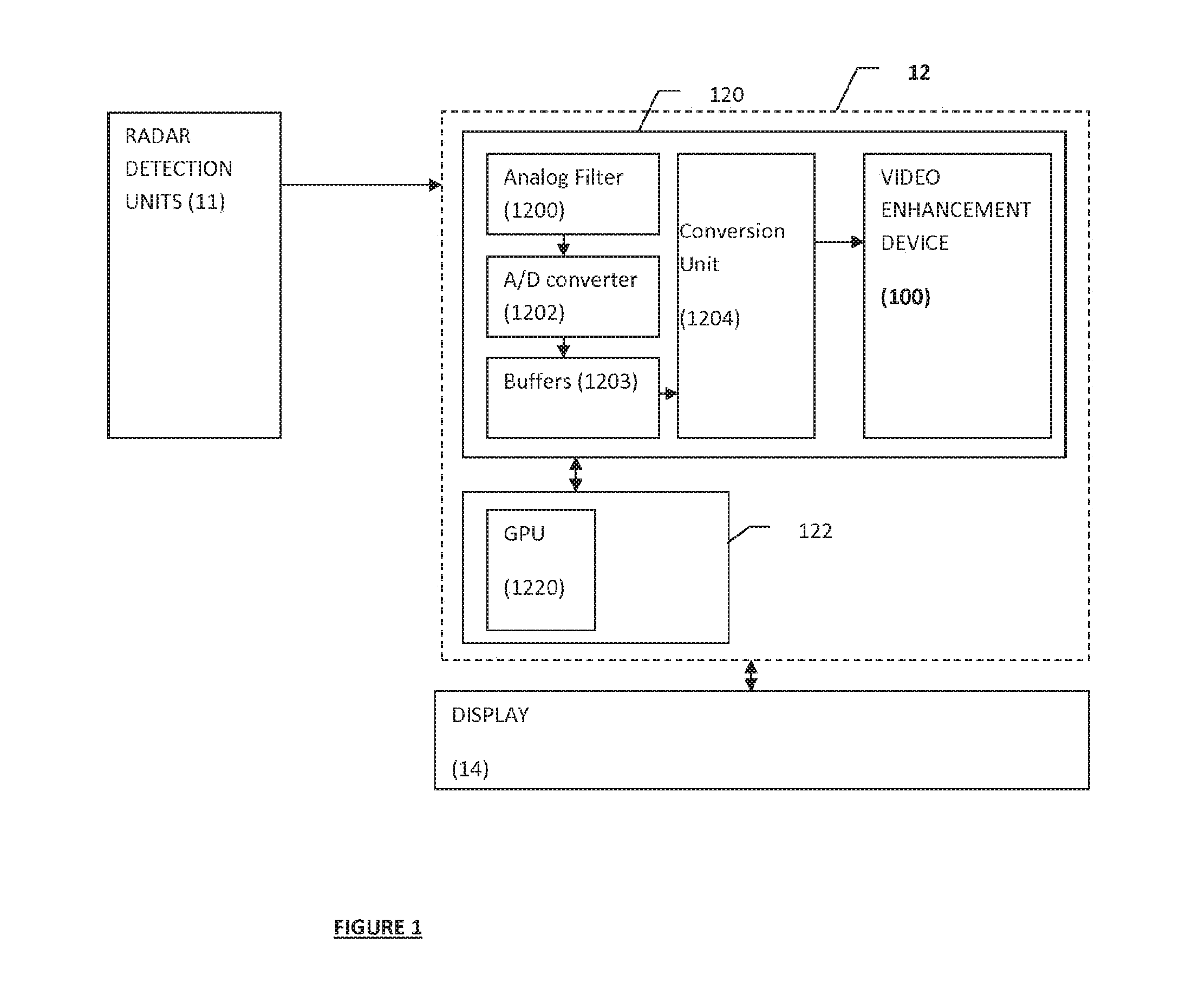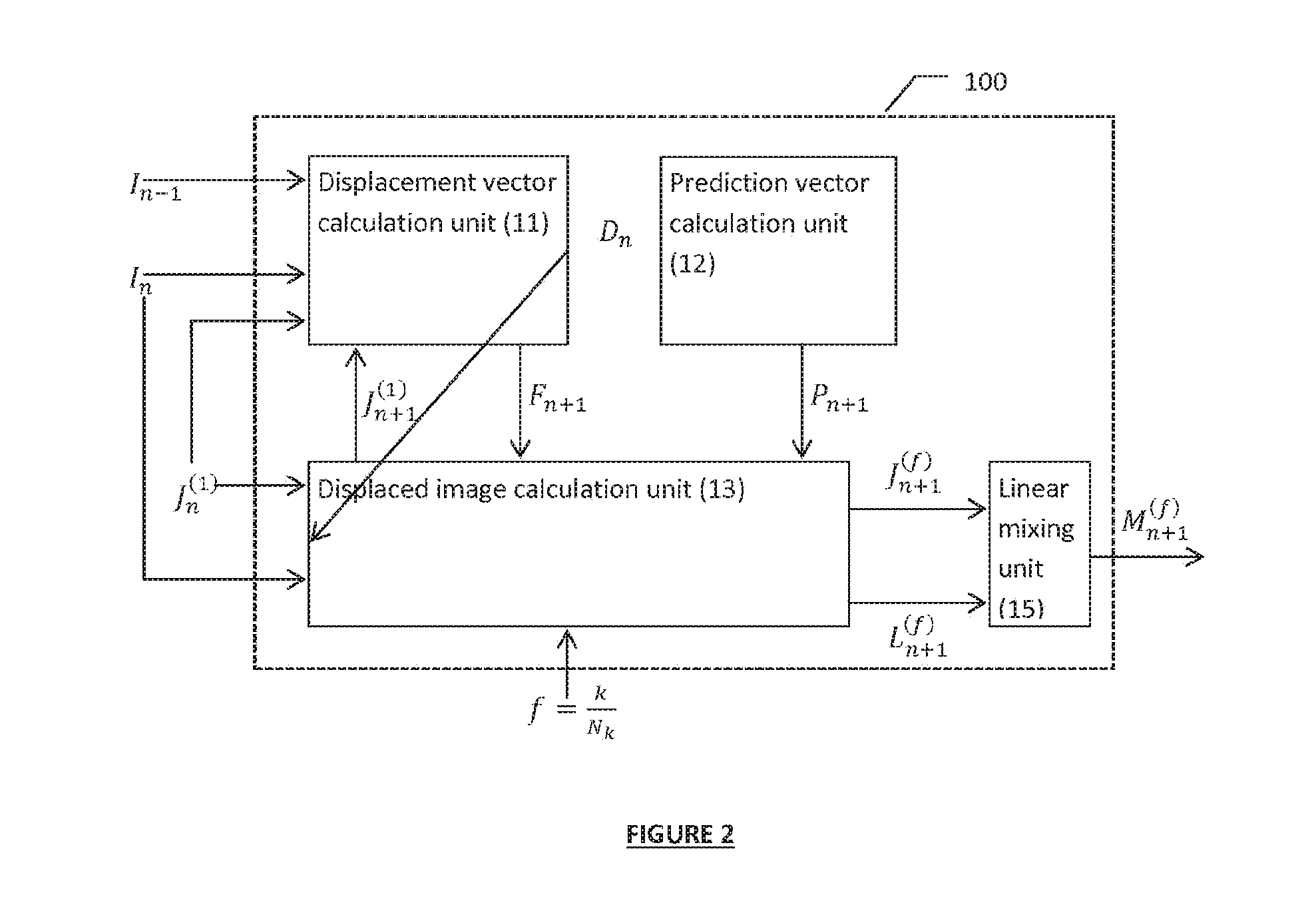Video enhancing device and method
a technology of video enhancement and radar, applied in the field of video processing, can solve the problems of difficulty in discerning a small target in a highly fluctuating and noisy environment, and inability to efficiently distinguish low rcs and slow moving targets from stationary clutter. , to achieve the effect of easy discerning low rcs
- Summary
- Abstract
- Description
- Claims
- Application Information
AI Technical Summary
Benefits of technology
Problems solved by technology
Method used
Image
Examples
Embodiment Construction
[0023]Referring to FIG. 1, there is shown an exemplary implementation of a video enhancing device 100 according to certain embodiments of the invention.
[0024]The video enhancing device 100 is configured to receive two images In and In−1 corresponding to two successive scans captured by a video surveillance system 1. More specifically, the video enhancing device 100 is further configured to output the next scan In+1 from the two successive scans corresponding to the previous scan In−1 and the current scan In.
[0025]Even if the invention is not limited to such applications, the invention has particular advantages for the surveillance and detection of slow moving objects, such as for example a swimmer in the sea. In a preferred embodiment of the invention, the video surveillance system 1 may be a radar surveillance system. The following description will be made with reference to such a radar application. However, the skilled person will readily understand that the invention may be used ...
PUM
 Login to View More
Login to View More Abstract
Description
Claims
Application Information
 Login to View More
Login to View More - R&D
- Intellectual Property
- Life Sciences
- Materials
- Tech Scout
- Unparalleled Data Quality
- Higher Quality Content
- 60% Fewer Hallucinations
Browse by: Latest US Patents, China's latest patents, Technical Efficacy Thesaurus, Application Domain, Technology Topic, Popular Technical Reports.
© 2025 PatSnap. All rights reserved.Legal|Privacy policy|Modern Slavery Act Transparency Statement|Sitemap|About US| Contact US: help@patsnap.com



